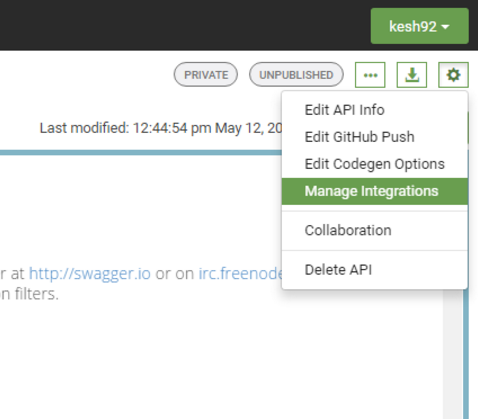We’re excited to announce our latest integration for SwaggerHub, this time with Atlassian’s source control management platform — Bitbucket. This integration helps developers keep their assets on SwaggerHub and Bitbucket in sync and updated, so teams working on your source control host have all the code of your API from SwaggerHub.
Why Bitbucket?
Every developer knows the importance of source control and how it can make software development manageable and iterative. But where do you store your code that’s managed by the source control tool? Be it Git , Mercurial, or Subversion, a source control host to store and work with code on a common platform with your collaborators is a great compliment. BitBucket, along with GitHub and GitLab, has emerged as a dominant player in the source control hosting environment. BitBucket has become a great resource for teams for hosting their code, with powerful, secure features that make it very resourceful for organizations and large companies.
So what does that mean for me?
While source control tools are great for hosting code, they’re not meant to edit, design, and build APIs. Source control hosts aren’t meant for RESTful interfaces which description formats like the Swagger (OpenAPI) specification help construct. With SwaggerHub’s integration with Bitbucket, users can now seamlessly integrate their API’s documentation and code, and keep it in sync with their repository on Bitbucket.
Let’s take a simple example.
Your organization’s API force has multiple teams working on various aspects of your API’s lifecycle. You’ll have architects who lay out your API’s structure, server side developers working on building a solid back end for your API, while client-facing developers focus on engineering a great experience for your API’s end consumers. The team’s testers focusing on quality assurance with your DevOps team will be working to securely deploy the API. All these teams have two common denominators — your API and the host of your team’s code base. With SwaggerHub’s integration with Bitbucket, you can now keep the above updated simultaneously. This means your team’s workflow will be smoother than ever and fit into your continuous integration process. (SwaggerHub is also proud to offer integrations with other source control tools, like GitHub. You can learn more about all of the integrations offered in SwaggerHub here.)
So how do I get started?
Well, for starters, you need an API definition on SwaggerHub and an existing repository on BitBucket. You can signup for SwaggerHub for free, and start writing your Swagger definition, or import an existing definition. Once you have them in place, find the Manage Integrations in the top corner of your API Editor, and select the Bitbucket Integration.  You’ll then be given a few options to see exactly how how your API’s definition along with the right code would be synchronized with your repository, including the kind of code (server template or client SDK), repository and whether you’d want SwaggerHub to fully or partially manage your repository. That’s it! Your API definition and code from SwaggerHub will now be synchronized with your Bitbucket repository for your entire team to work on! Check out our Bitbucket help section to learn more about using the Integration. Of course, SwaggerHub has a whole suite of Integrations to build on your API’s functionality, so feel free to browse our documentation covering them in greater detail. So head on over to SwaggerHub and give this Integration a whirl. Feel free to send us suggestions for any new Integrations you’d like to see on SwaggerHub through a feature request. Not an existing SwaggerHub user? Sign up free to start building better APIs with SwaggerHub.
You’ll then be given a few options to see exactly how how your API’s definition along with the right code would be synchronized with your repository, including the kind of code (server template or client SDK), repository and whether you’d want SwaggerHub to fully or partially manage your repository. That’s it! Your API definition and code from SwaggerHub will now be synchronized with your Bitbucket repository for your entire team to work on! Check out our Bitbucket help section to learn more about using the Integration. Of course, SwaggerHub has a whole suite of Integrations to build on your API’s functionality, so feel free to browse our documentation covering them in greater detail. So head on over to SwaggerHub and give this Integration a whirl. Feel free to send us suggestions for any new Integrations you’d like to see on SwaggerHub through a feature request. Not an existing SwaggerHub user? Sign up free to start building better APIs with SwaggerHub.